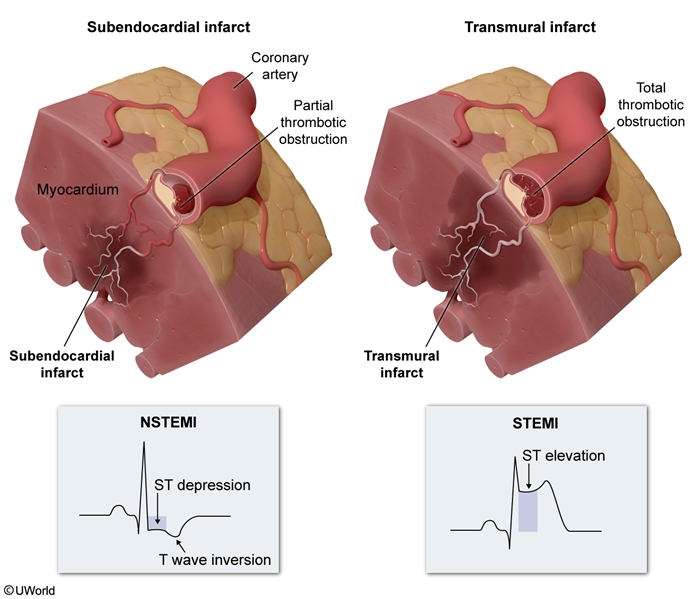Mechanical Complications Of Myocardial Infarction
Article Sections
Introduction
Mechanical complications of myocardial infarction (MI) are serious alterations in cardiac structure that result from myocardial necrosis and tissue weakening at the site of infarction. There are 3 types of relatively acute mechanical complications, all of which cause abrupt hemodynamic disruption:
- Papillary muscle rupture
- Interventricular septum rupture
- Left ventricular (LV) free wall rupture
In addition, LV aneurysm is a delayed complication of MI that usually presents relatively gradually. Recognition of mechanical complications of MI is crucial because prompt intervention is usually required to prevent death (or reduce long-term morbidity in the case of LV aneurysm).
Pathophysiology, types, and clinical presentation
The underlying pathophysiology of mechanical complications of MI is similar for all types. Infarction causes myocardial cell death, and ensuing coagulative necrosis and enzymatic lysis of connective tissue weaken the infarcted tissue. The infarcted region is akinetic (unable to contract), which also creates increased shear stress at the junction with adjacent healthy myocardium. These factors can lead to tissue rupture. In LV aneurysm, tissue rupture does not occur; but the gradual replacement of necrosed myocardium with fibrous scar tissue results in thinning and dyskinesis of a large portion of the ventricular wall and consequent ventricular dysfunction.
Continue Learning with UWorld
Get the full Mechanical Complications Of Myocardial Infarction article plus rich visuals, real-world cases, and in-depth insights from medical experts, all available through the UWorld Medical Library.
Figures

